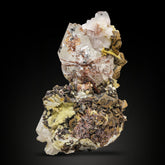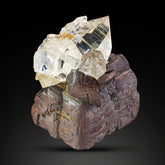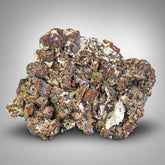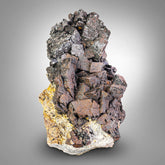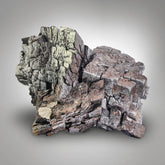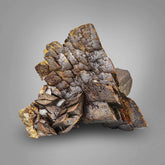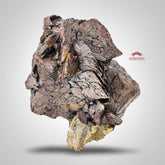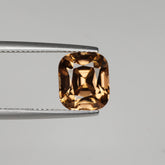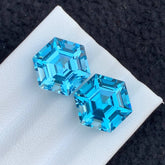Filter
8 results
30
- 10
- 15
- 20
- 25
- 30
- 50
Best selling
- Featured
- Best selling
- Alphabetically, A-Z
- Alphabetically, Z-A
- Price, low to high
- Price, high to low
- Date, old to new
- Date, new to old
Sort
Sort by:
- Featured
- Best selling
- Alphabetically, A-Z
- Alphabetically, Z-A
- Price, low to high
- Price, high to low
- Date, old to new
- Date, new to old
-
Sagenite Rutile crystals on Quartz with Apatite and Siderite from Pakistan - Bicolor
The Sagenite Rutile crystals on Quartz with Apatite and Siderite from Pakistan form a mesmerizing and intricate mineral specimen that showcases the Earth's geological wonders. The base of the specimen consists of transparent Quartz crystals, providing a stunning backdrop for the intricate network of...- $2,500.00
- $2,500.00
- Unit price
- / per
-
Bicolor
-
tabular Smoky Quartz with Siderite crystals Specimen from Pakistan - Brown
This stunning specimen showcases the natural beauty of Faden Quartz crystals interwoven with Calcite, originating from the mineral-rich regions of Pakistan. The Faden Quartz crystals, characterized by their distinctive thread-like inclusions, create a mesmerizing and intricate pattern within the specimen. The clarity and transparency...- $450.00
- $450.00
- Unit price
- / per
-
Brown
-
Gorgeous Quartz crystal cluster perched on lovely Siderite crystal from Pakistan - Brown
Behold the captivating beauty of a Quartz crystal cluster gracefully nestled upon a bed of exquisite Siderite crystals, originating from the enchanting mineral-rich landscapes of Pakistan. The Quartz crystals, with their pristine clarity and intricate formations, create a mesmerizing spectacle as they interlock and...-
Brown
-
-
Seductive Golden Rutile Crystals on Siderite Crystal Aggregate from Pakistan - Brown
In the world of mineralogy and crystal collecting, every now and then, a specimen comes along that leaves collectors and enthusiasts in awe. Such is the case with the Seductive Golden Rutile Crystals on Siderite Crystal Aggregate from Pakistan. This exquisite mineral specimen is...- $180.00
- $180.00
- Unit price
- / per
-
Brown
-
Nebulous Sculptural Specimen of Siderite Crystal Aggregate on Matrix from Pakistan - Brown
This is an impressive and sculptural specimen of inter grown Siderite crystal aggregate nicely positioned on matrix. The crystals has perfect sharp edges with compact crystal quality and showing great contrast against the contrasting matrix. The Siderite crystals has interesting crystallography all around with...- $450.00
- $450.00
- Unit price
- / per
-
Brown
-
Mineralogical Art Entergrown Aggregate of Siderite Crystals from Skardu, Pakistan - Brown
This is an attractive and artistic piece of Siderite crystal aggregate with magnificent natural art on crystal surface. The crystals are so well crystalized and composed all around giving this piece a 360-degree view. It has very fine and compact crystal quality, thick crystals...- $120.00
- $120.00
- Unit price
- / per
-
Brown
-
Stunning Siderite crystal aggregate from Shigar Valley, Skardu, Pakistan - Brown
This is an artistic and attractive example for the Siderite crystal in aggregate form. It has magnificent natural art on crystal surface with compact crystal quality. It has vibrant brown coloration with metallic luster and fine crystal edges. It's well crystalized all around with...- $100.00
- $100.00
- Unit price
- / per
-
Brown
-
Very Well Crystalized Aggregate Of Siderite Crystals On Matrix - Brown
Presenting this beautiful and attractive specimen of Siderite crystals nicely attached and perched on matrix. The crystals are highly striated and so well crystalized all around with razor sharp crystal edges. The crystals are so compact and has vibrant brown color with natural art...- $220.00
- $220.00
- Unit price
- / per
-
Brown

